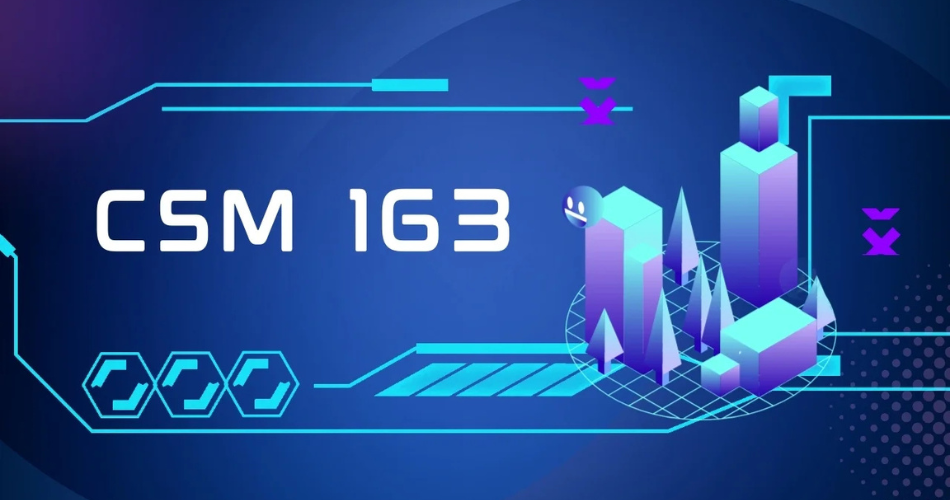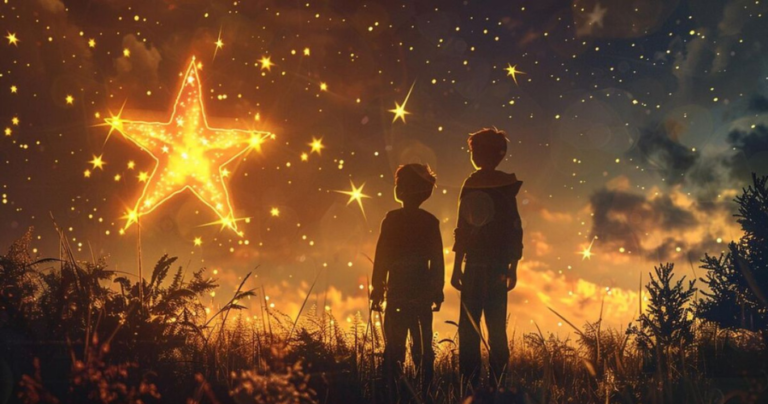The Chaos of Chapter 163: A Deep Dive into “Chainsaw Man”
Introduction
In the vast realm of manga and anime, few titles have left a mark as significant as “Chainsaw Man.” This series stands out for its remarkable fusion of horror, action, and emotional depth, capturing the attention of fans across the globe. The latest chapter, CSM 163, adds another layer to this intricate narrative, presenting fresh perspectives on character growth and plot developments.
This article will delve into an in-depth analysis of CSM 163, focusing on pivotal events, character interactions, and the broader ramifications for the series’ trajectory.
Whether you are a dedicated follower or new to the saga, this examination of CSM 163 will illuminate the chaos and complexity that characterize the “Chainsaw Man” universe. Join us as we peel back the layers of this enthralling story and discover how it continues to redefine norms and challenge expectations.
The Blurred Lines Between Reality and Dreams
Chapter 163 of Chainsaw Man delves deeply into the complex relationship between reality and dreams, a recurring theme throughout the series. Haruka’s awakening is marked by a jarring realization: their escape from danger has slipped under the media’s radar, overshadowed by sensational coverage of Koma Komagawa, a reporter-turned-idol. This media focus starkly contrasts with the group’s struggles, leaving Haruka feeling disenchanted and questioning the significance of their actions, especially in relation to the emerging Chainsaw Man Church.
At the same time, Asa is grappling with her identity in a world that seems to have forgotten her. Once hailed as a top Devil Hunter, she now faces the dual challenges of coping with the physical and emotional ramifications of losing an arm. Asa’s journey in Chapter 163 encapsulates a broader commentary on identity and societal recognition, reflecting the internal conflict many face when confronted with public indifference.
Denji, the series’ protagonist, also undergoes a harsh awakening in this chapter. After a brutal encounter with Katana Man, who is intent on revenge, Denji comes to the sobering realization that his surreal experiences are not mere dreams but stark realities he must confront. This violent clash highlights the escalating stakes within Chainsaw Man, reinforcing the ongoing theme of conflict against both external adversaries and internal struggles.
The Emergence of a New Threat: The Chainsaw Man Church
A significant turning point in Chapter 163 is the rise of the Chainsaw Man Church, led by the compelling figure of Koma Komagawa. As this organization gains momentum, it introduces a wave of chaos that profoundly impacts both the characters and society at large. Under Koma’s influence, a multitude of individuals are transformed into Devils, symbolizing a drastic erosion of humanity and a notable shift in power dynamics.
Koma’s dual role as both a media figure and idol adds an intriguing dimension to the narrative. By leveraging her media presence, she skillfully shapes public perception to advance the Church’s agenda, blurring the boundaries between reality and sensationalism. The Church’s actions create a significant ripple effect, challenging the characters’ understanding of their realities and their respective roles within it. The implications of this chapter extend beyond individual confrontations; they invite reflection on themes of free will, control, and the nature of evil in a society increasingly dominated by chaos and fear.
As tensions rise, the characters must navigate not only external dangers but also the evolving nature of their identities in response to this formidable new threat. The introduction of the Chainsaw Man Church in Chapter 163 marks a pivotal shift in the series, redefining the power dynamics and compelling the protagonists to reassess their positions in an ever-changing world.
Chapter CSM 163: Group Dynamics and Individual Struggles
In Chapter 163 of “Chainsaw Man,” the intricate dynamics within the group are brought to the forefront, highlighting how individual challenges can significantly affect collective decision-making processes. Each character is entangled in personal dilemmas that not only shape their actions but also impact their relationships and group strategies.
Haruka’s Crisis of Confidence
Haruka undergoes a profound realization regarding the group’s perceived insignificance, leading to a significant crisis of confidence. As he reevaluates his objectives, he finds himself in conflict with others who interpret their predicament differently. This shift in perspective creates tension, as the group navigates their evolving understanding of purpose and identity amid the chaos they face.
Asa’s Identity Struggle
Adding to this complexity is Asa, whose ongoing identity crisis intensifies the existing tension. Her quest for validation amidst the tumult affects how she interacts with her teammates, further complicating their dynamics. This exploration of identity reflects a larger theme of survival in a world filled with uncertainty, showcasing how individual quests for meaning can ripple through the group.
Denji’s Turmoil and Its Impact
Denji’s internal struggles exacerbate these tensions within the team. His confrontation with Katana Man leaves not only physical scars but emotional ones as well, as he grapples with feelings of inadequacy and loss. Yoru’s pragmatic view of Denji—prioritizing strength over emotional bonds—serves to deepen the fractures within their alliances. The differing priorities and conflicts among the group members enrich the narrative, illustrating the profound impact of personal challenges on collective dynamics.
Contrasting Perspectives: Nobana and Haruka
Nobana’s anxiety regarding their safety sharply contrasts with Haruka’s advocacy for unity. This divergence sparks intense debates about their future steps, encapsulating the intricacies of their situation. The tension between prioritizing safety and fostering unity embodies the overarching theme of survival as the group attempts to navigate a perilous environment.
Decisions and Dilemmas: Shaping Their Future
As the storyline progresses in Chapter 163, the group confronts crucial decisions that will determine their fate. The ongoing dialogue surrounding safety versus solidarity becomes increasingly urgent. Haruka argues for the importance of staying united, asserting that their strength lies in numbers. In contrast, Nobana voices legitimate concerns about their vulnerability, leading to a stalemate that reflects the complexities of their predicament.
The characters find their options limited, with each choice carrying significant implications. This dilemma underscores the central theme of Chapter 163, where individual aspirations often collide with the needs of the group. As they grapple with their ambitions and insecurities, they must also weigh the well-being of their collective.
This theme of choice and consequence resonates throughout “Chainsaw Man.” In Chapter 163, it manifests poignantly as the characters’ decisions not only influence their immediate circumstances but also reverberate throughout the larger narrative, affecting their identities and relationships.
The Emotional Core: Identity and Recognition in CSM 163
A significant aspect of chapter 163 of Chainsaw Man (CSM 163) is its profound emotional impact, particularly regarding themes of identity and recognition. Characters like Haruka grapple with feelings of worthlessness, while Asa faces the complexities of her transformed identity. Denji’s confrontation with his past further illustrates the intricate exploration of what it means to be acknowledged in a world that often ignores individual struggles.
Asa’s internal conflict serves as a poignant metaphor for the ephemeral nature of fame and the quest for self-worth in an ever-changing society. Her journey resonates with anyone who has ever felt marginalized or overlooked, reflecting real-world experiences of identity crises and the quest for personal validation.
Denji’s narrative encapsulates the stark reality of seeking recognition amid adversity. The ghosts of his past and his ongoing battles emphasize the emotional burdens carried by those striving for acknowledgment and validation. This depth of emotion enriches CSM 163, prompting readers to introspect on their own experiences with identity and the universal quest for recognition.
Conclusion
Chapter 163 of Chainsaw Man encapsulates the series’ hallmark fusion of chaos, emotional intricacy, and rich character dynamics. As Haruka, Asa, Denji, and their companions confront new threats alongside their personal challenges, they are compelled to explore their identities and the precarious nature of fame and recognition. The introduction of the Chainsaw Man Church and its enigmatic leader, Koma Komagawa, adds additional layers of intrigue, promising to shape the narrative’s future trajectory.
The chapter’s exploration of group dynamics, individual challenges, and moral dilemmas offers readers a thought-provoking experience that resonates on multiple levels. As the story continues to unfold, fans are keen to see how these themes will interweave and advance the plot.
For those invested in the realms of manga and anime, CSM 163 provides an engaging look into the complexities of Chainsaw Man. Its examination of identity, control, and survival addresses universal themes that leave a lasting impression on its audience.
As the conversation surrounding Chainsaw Man expands, readers are encouraged to share their insights and engage with the community. Discussions about theories, favorite moments, and predictions are integral to the vibrant Chainsaw Man fandom, which thrives on collaboration and shared passion. Join in the dialogue and dive into the dynamic world of Chainsaw Man as we collectively unravel its mysteries and celebrate its distinctive storytelling.
FAQs about Chainsaw Man Chapter 163
1. What are the main themes explored in Chapter 163 of “Chainsaw Man”?
Chapter 163 delves into themes of identity, recognition, and the blurred lines between reality and dreams. It highlights individual struggles against the backdrop of group dynamics and societal indifference.
2. Who are the key characters featured in this chapter?
The key characters in this chapter include Denji, Asa, Haruka, Nobana, and Koma Komagawa. Each character faces unique challenges that impact their relationships and roles within the group.
3. What is the significance of the Chainsaw Man Church introduced in this chapter?
The Chainsaw Man Church, led by Koma Komagawa, represents a new threat to the characters and society. It symbolizes a shift in power dynamics and explores the influence of media on public perception, raising questions about free will and morality.
4. How does Haruka’s crisis of confidence affect the group dynamics?
Haruka’s feelings of worthlessness lead to tensions within the group, as his perspective on their significance conflicts with that of other members. This conflict influences their decision-making and highlights the complexities of their situation.
5. What internal struggles does Asa face in this chapter?
Asa grapples with her identity after losing an arm, questioning her worth and how she is perceived by others. Her journey reflects broader themes of validation and self-worth in a world that often overlooks individual struggles.
6. How does Denji’s confrontation with Katana Man impact his character?
Denji’s encounter with Katana Man forces him to confront harsh realities about himself and his experiences. This conflict deepens his emotional scars and contributes to his ongoing struggle for recognition and validation.
7. What are the implications of the decisions made by the characters in this chapter?
The choices made by the characters have significant consequences for their futures and relationships. The ongoing dialogue between safety and unity showcases the intricate balance they must maintain in their perilous environment.
8. How does Chapter 163 continue to develop the overarching narrative of “Chainsaw Man”?
This chapter builds on existing themes of chaos and emotional depth while introducing new threats and character dynamics. The evolving challenges faced by the characters promise to shape the narrative’s trajectory in upcoming chapters.
9. What should readers look forward to after Chapter 163?
Readers can anticipate further exploration of the characters’ identities, the ramifications of the Chainsaw Man Church, and how the protagonists navigate their relationships and personal struggles in an increasingly chaotic world.
10. How does the community engage with “Chainsaw Man” after Chapter 163?
The vibrant “Chainsaw Man” fandom engages in discussions about theories, favorite moments, and predictions for future developments. Readers are encouraged to participate in these conversations to deepen their understanding of the series.
Stay informed with the latest news and updates on Worldinsforbestake.com






